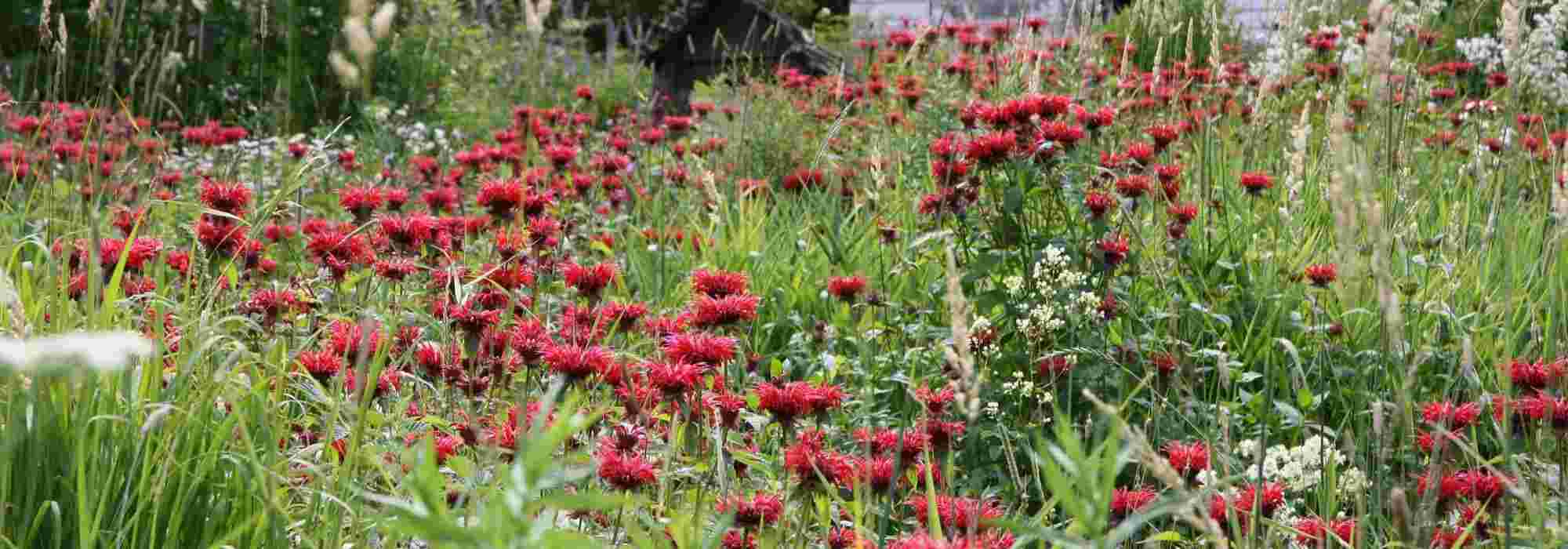
10 perennials with red flowers every garden should have
our selection
Contents
True mistress of the spectrum of light, the colour red has always unleashed passions of which it is the primary chromatic symbol. Associated with ardour and conflicting emotions such as love and hate, this fascinating colour inevitably finds its place in the garden.
It declinates into a multitude of tones and shades ranging from carmine through Bordeaux to crimson. Incandescent, deep or dazzling, red flowers are synonymous with power and character.
So here is my selection of the 10 most beautiful perennials with red flowers, varieties ideal to add warmth and dynamism to your borders.
Crocosmia 'Lucifer'
Le Crocosmia ‘Lucifer’ lives up to its name, because, even if it does not come straight from Hell, it bears intense red flowers, colour of fire. It is an old variety still much appreciated for its warm, vivid colour, but also for its robustness, its long summer flowering (July to September) and its undemanding nature. It is a fairly architectural plant with flowers in horizontal spikes, easily reaching one metre in height.
In the garden, Crocosmia (also called montbretia) prefers light, rather cool soil. Hardy down to -10 °C, it is best suited to mild climates. It combines easily and can be used to create all kinds of atmospheres: modern with grasses, tropical with kniphofias…
You will find many ideas in this article: “Crocosmia, Montbretia: 9 successful pairings”.
Achillea millefolium 'Paprika'
Achillea millefolium ‘Paprika’ is a beautiful summer perennial with long flowering that produces, from June to October, remarkable corymbose flowers, red with yellow centres which, over time, take on more orange shades. They are accompanied by fine, fern-like aromatic green foliage. The whole forms an upright clump about 60 cm tall.
Achillea is a sun-loving plant. Undemanding, it is easy to grow in dry or well-drained, not-too-rich soil. It is hardy down to -15 °C.
In the garden, it will naturally find its place in a slightly wild border, with grasses such as Stipa, airy perennials such as Gaura, or architectural perennials such as Monarda.
Did you know? Achillea owes its name to Achilles, hero of Greek mythology, who used it to heal his wounds and those of his soldiers.
Discover other Red flowering perennials
View all →Available in 0 sizes
Available in 1 sizes
Available in 1 sizes
Available in 1 sizes
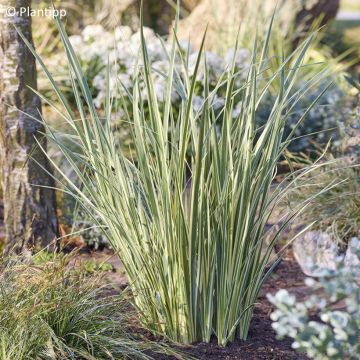
Available in 1 sizes
Available in 1 sizes
Available in 1 sizes
Available in 1 sizes
Available in 2 sizes
Available in 1 sizes
Red Dream Sage
Equally at ease in English cottage gardens as in Mediterranean gardens, Salvia x jamensis ‘Rêve Rouge’ is simply my favourite red perennial. Its main asset lies in the colour of its flowers: a pure, deep, vivid red, enhanced by dark brown calyces. With perpetual flowering (from May to June then from August to November), it also stands out for its almost uninterrupted flowering from late spring until first frosts. Finally, it has evergreen foliage that allows it to retain a handsome appearance throughout the year.
Of handsome stature, this shrubby sage forms a compact little bush 80 cm to 1 m tall.
In the garden, it is very easy to grow and thrives in sun, in any free-draining soil, even poor and calcareous. Hardy to -10 °C, Salvia ‘Rêve Rouge’ will benefit from being grown in a sheltered position. And don’t hesitate to plant it in a pot or container; that suits it perfectly.
In rockery, border or scree garden, pair it with a multitude of colourful flowers such as Nepetas, Zinnias, Echinaceas, Delphiniums and Dahlias…
My tip: Keep an eye out! In autumn, low sunlight truly transforms this sage: when rays of sunlight pass through the petals, they turn them into tiny stained-glass windows… Splendid!
Read also
How to stake a perennial plant?Coreopsis 'Ruby Red'
Coreopsis ‘Ruby Red’ is a pretty American Asteraceae that stands out for the colour of its small star-shaped flowers: a rich, deep ruby red, highlighted by very fine dark green foliage. Its long flowering starts at the beginning of summer, in June and continues uninterrupted until October. Compact with a neat, tidy habit, this perennial reaches 50 cm high by 40 cm wide. It can slip into any border but can also be grown in a pot, on a terrace or balcony.
It is an undemanding plant, hardy down to -15° C, that grows without trouble even in difficult situations such as rocky banks. It thrives in sun in any well-drained soil. My advice: do not water too much, it tolerates drought well.
A true Best-Friend of butterflies, this variety will also be the ideal companion for light perennial plants such as scabious, grasses and groundcover and dwarf roses.
Bleeding Heart 'Bacchanal'
Bleeding Heart ‘Bacchanal’ is an elegant variety that stands out for its heart-shaped red flowers but also for its elegant foliage where blue and silver mingle. Easy to grow, it is also notable for its generous flowering from May to June.
In the garden, it thrives in fresh, humus-bearing soil tending to acidic or neutral, in the beneficial shade of trees… Note that it’s a hardy plant, down to -15 °C but it does not like excesses: no waterlogged soil in winter and not too much sun in summer!
My advice: once established, do not move it; it needs several years to reach full development.
For a fresh, elegant display, consider surrounding your Bleeding Heart with summer perennials in pink and white tones, such as Monarde Garden View Scarlet or the beautiful Astrantia major Alba. The aim is to fill space left empty by the Bleeding Heart entering dormancy as summer heat arrives.
Agastache Kudos Coral
Agastache ‘Kudos Coral’ is a superb long-flowering coral-red variety that lights up garden from June to October. Selected for cold resistance (it is hardy down to -15°C), this American introduction proves easy to grow, within reach of all gardeners, even beginners! In garden it brightens borders but can also be grown in pots, on patio or balcony where it will delight bees, butterflies and other foraging insects.
Agastache ‘Kudos Coral’ forms a compact clump of leaves from which rises an abundant flowering in spikes adorned with luxuriant coral-red tubular flowers. At ripeness it reaches about 45 cm high with a 30 cm spread.
Fond of sunbathing too, Agastache thrives in full sun, in well-drained soil that does not retain too much water in winter but is not too dry in summer to support its fine flowering.
It will be an ideal companion to your grasses such as Stipa tenuifolia, Buenos Aires verbena throughout summer.
Small detail of great importance: dark foliage, scented of lemony mint, is particularly disease-resistant. It is even edible, as an infusion or to flavour a fruit salad…
Lobelia fulgens 'Queen Victoria'
Lobelia fulgens ‘Queen Victoria’ is a very interesting perennial for its blood-red flowering which occurs in July and again in late summer and early autumn. Flowers are borne on very dark spikes, set against purple, almost black foliage.
Native to American marshy regions, this perennial grows in sun or partial shade, in rich, moist to wet soil in summer but well drained in winter. Under these conditions, it is hardy to about −10°C.
This lobelia is perfect for wet areas and pond margins. Pair with other perennials for wet soil such as Lysimachia and Persicaria…
Oriental poppy 'Beauty of Livermere'
The Oriental poppy ‘Beauty of Livermere’, with its poppy-like appearance and brilliant red colour, adapts to any setting and looks as elegant in formal borders as in natural, rustic country-style compositions. Perennial, hardy and vigorous, this Oriental poppy flowers in May and June. It then forms a handsome plant about 50 cm wide by 1 metre high.
It is an easy-to-grow plant that thrives in full sun and particularly prefers well-drained, light, deep soils in a sunny position.
For a full, year-round display, pair it with perennials with late-summer or autumn flowering such as hollyhocks or snapdragons, which will fill the space left empty after its flowering.
Astilbe arendsii 'Fanal'
Astilbe arendsii ‘Fanal’ is a moisture-loving perennial that charms with its crimson flowers borne on upright spikes. Its spectacular flowering occurs in early summer, from June to July, and it reaches 60 cm in height, above decorative foliage that is purple in spring, turning dark green thereafter.
This perennial thrives in rich, moist to wet soil in partial shade. Ideal for enlivening an understorey or for flowering the damp margins of a water feature.
In the garden, I recommend emphasising contrast by pairing it with grasses such as Hakonechloa macra or ferns, such as ostrich fern (Matteuccia struthiopteris).
Mini carnation 'Lady in Red'
Simply adorable, Dianthus ‘Lady in Red’ is an excellent variety with vivid vermilion-red flowers. Double flowers form pompon-like blooms that appear from June to August and give off a delightful fragrance.
Ideal in rockeries, borders and even in pots or window boxes, this perennial plant also has attractive evergreen blue-grey foliage forming a dense clump from which stems about 30 cm tall emerge.
Robust, undemanding and unassuming, this pink thrives in sun in light, very well-drained soil. It appreciates calcareous soils but will not thrive in acidic or damp soil.
In the garden, pair with perennials with grey foliage such as artemisia, scabious, yarrow or coreopsis
To learn more
Did you enjoy this tip sheet?
Discover our selection of perennial plants with red flowers and be inspired by our ambience ‘Red and Black Garden’
- Subscribe!
- Contents
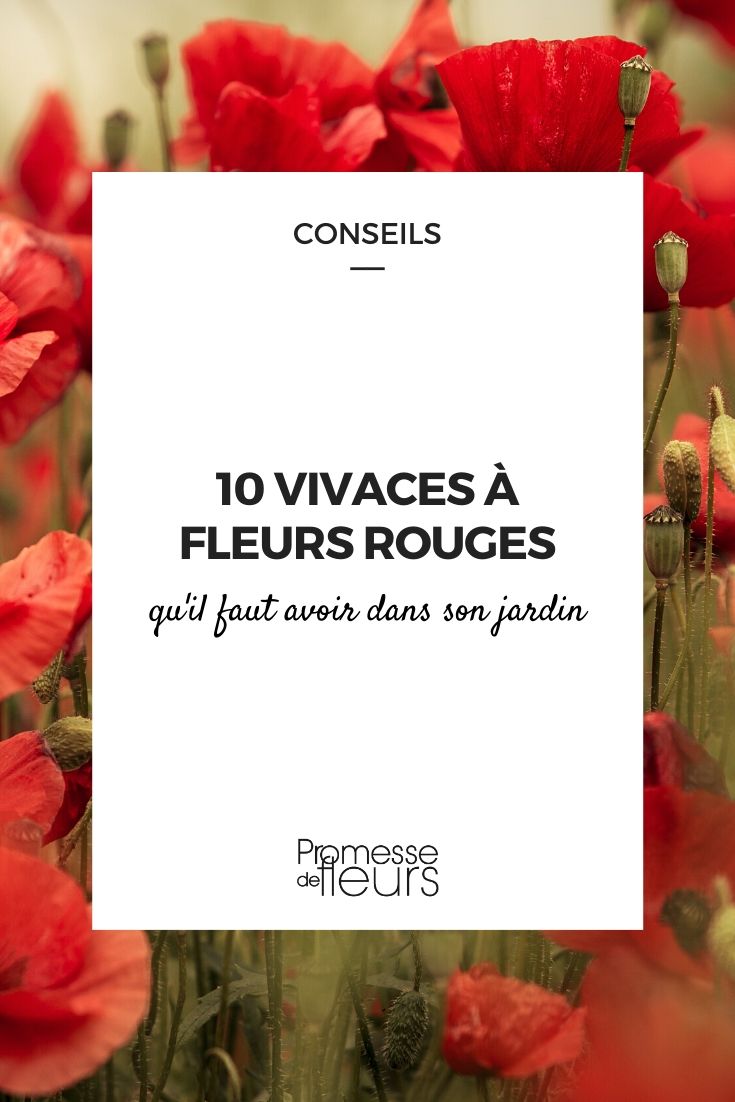































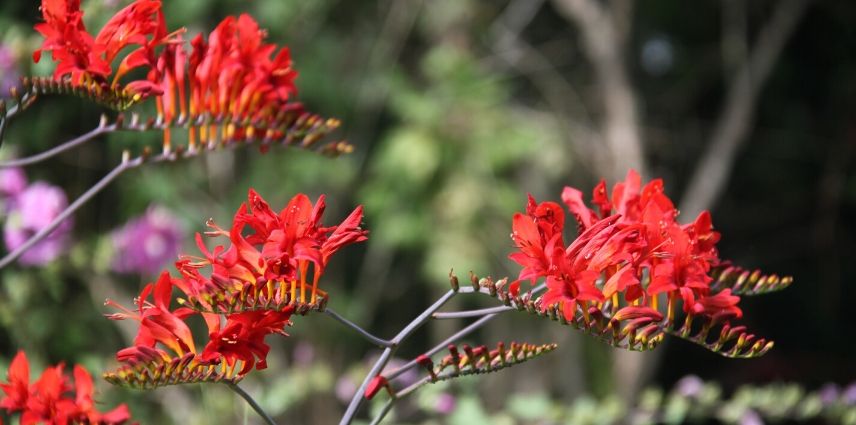
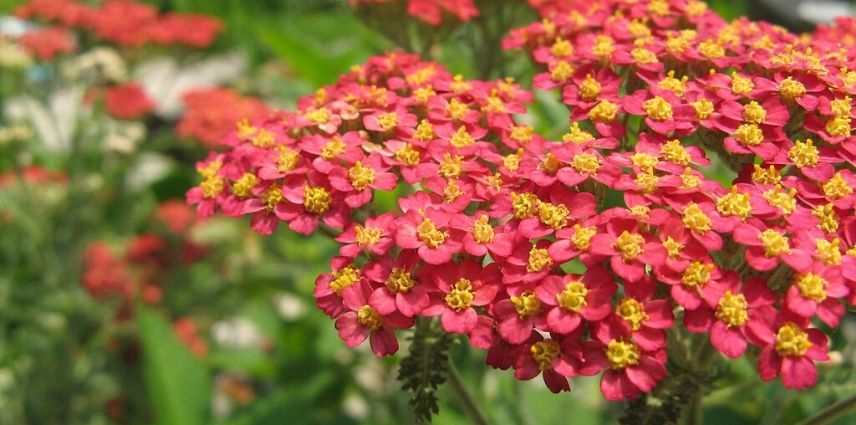




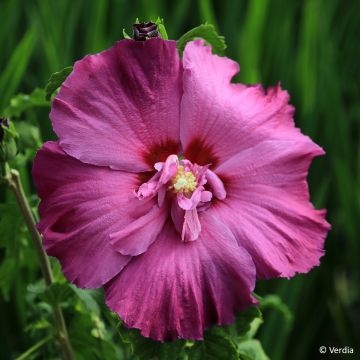
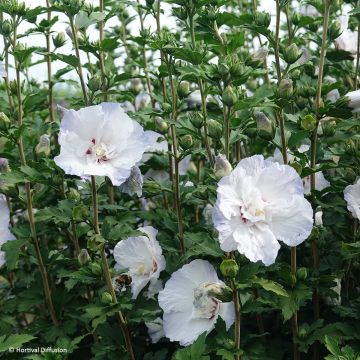


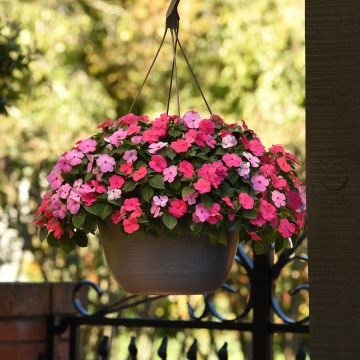
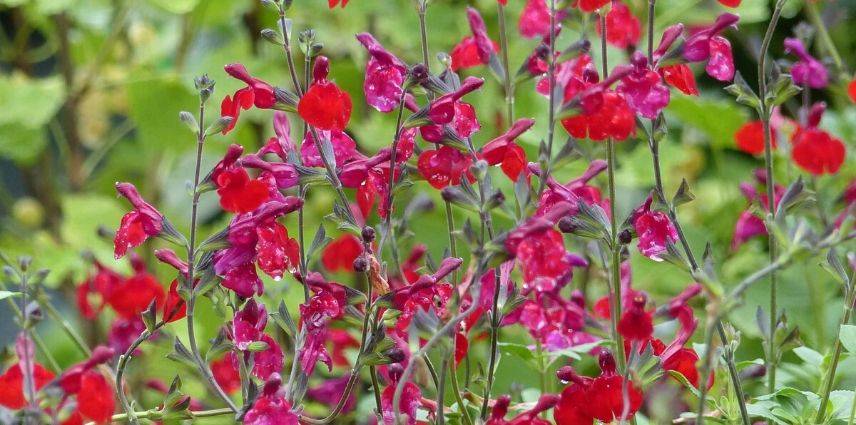
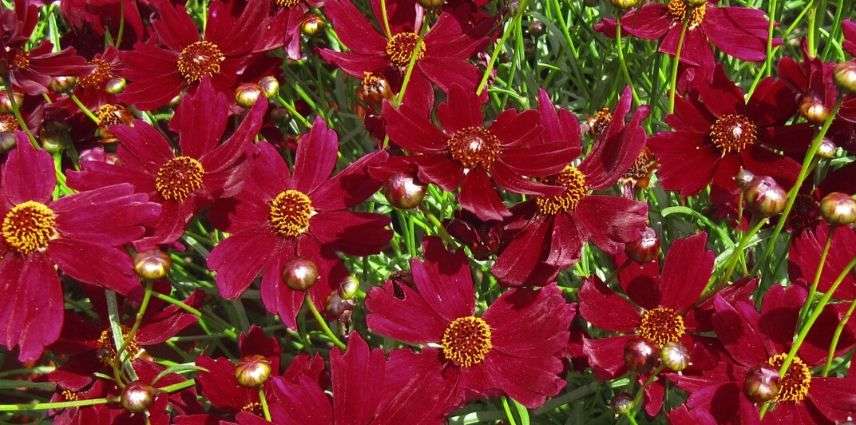

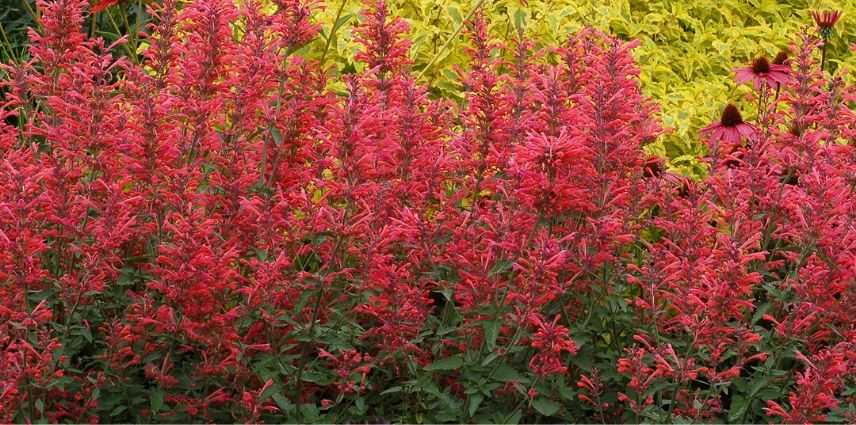
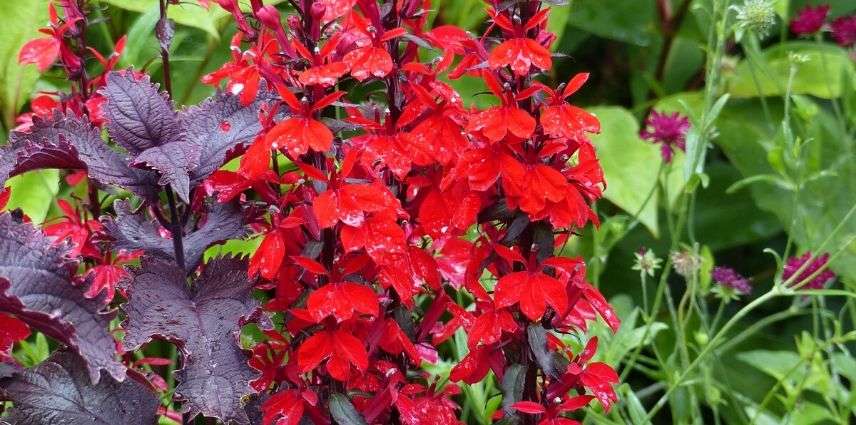
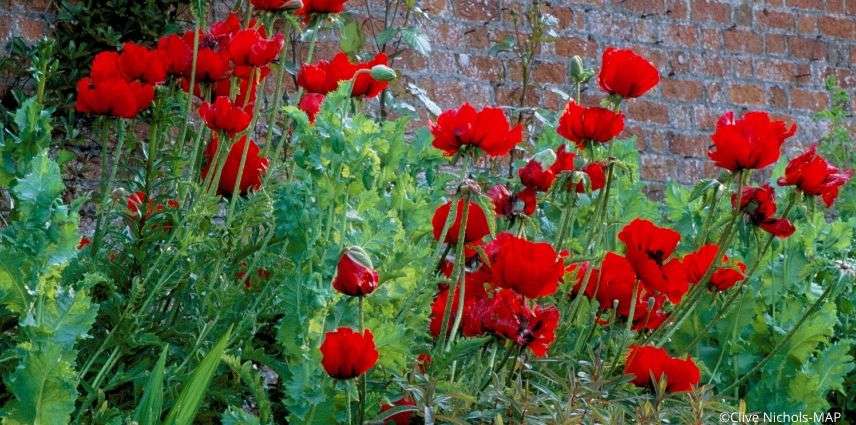
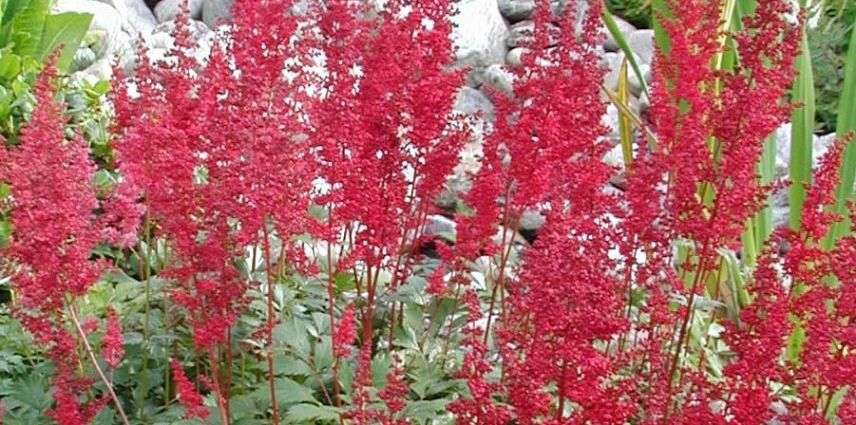
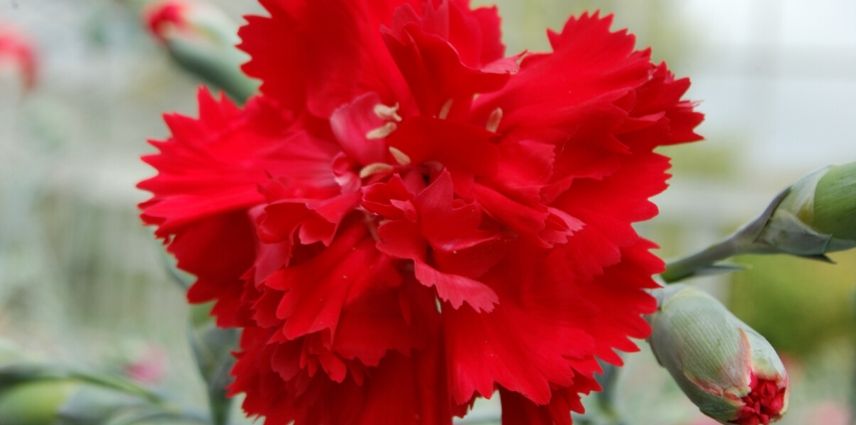
Comments